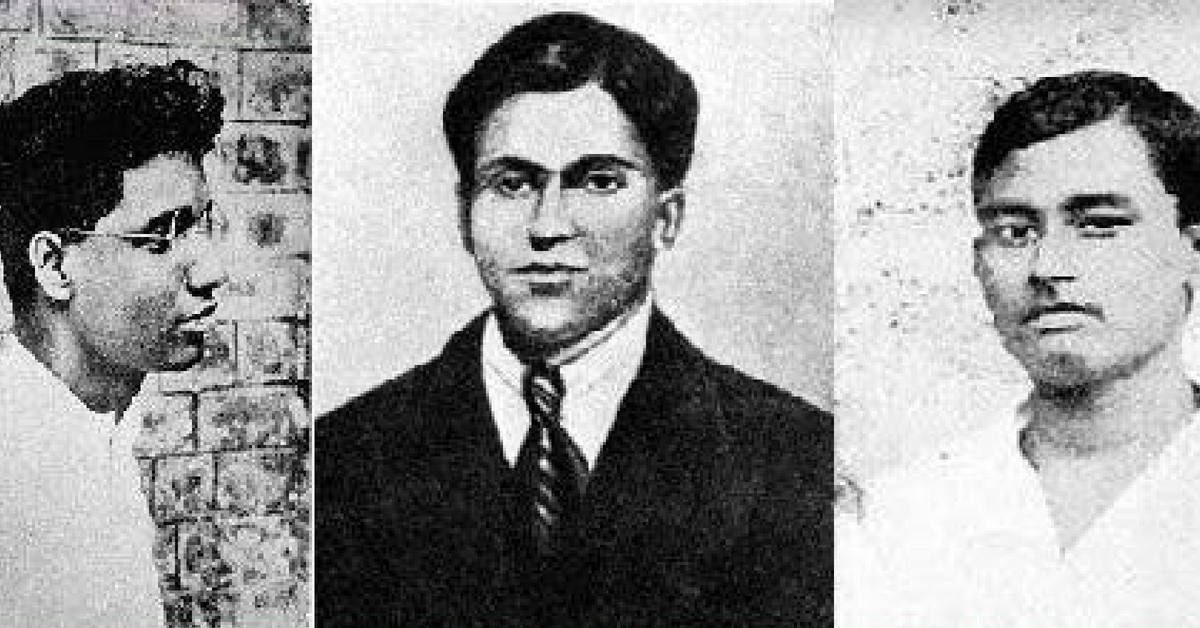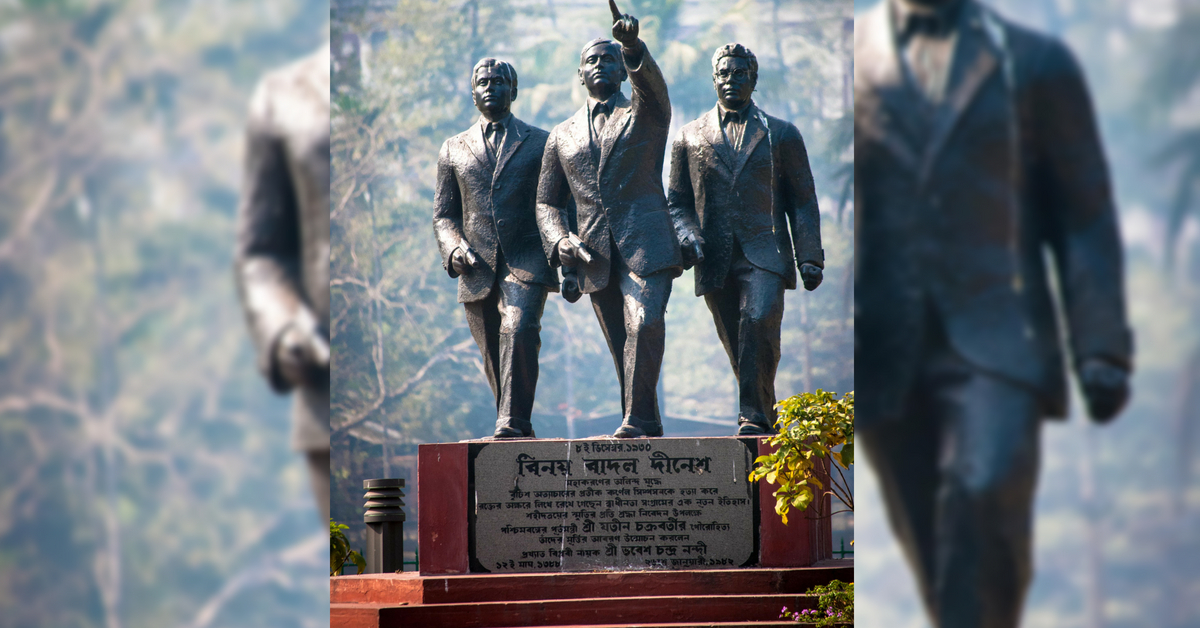Benoy Badal Dinesh: The Story of Three Brave Boys Who Took The Battle to the British!
The 3 bravehearts stormed Kolkata's Writer's Building, and started firing rounds at the British.

To honour this nation’s Independence Day, we bring you the fascinating stories of #ForgottenHeroes of #IndianIndependence that were lost among the pages of history.
It was the 8th of December 1930. The Writer’s Building in Kolkata, the administrative nerve centre of the city, the capital during British Rule, was buzzing with activity as usual.
British officers, gentry, Bengali gentlemen and clerks, were doing their regular business. It was then that three men shattered the silence, with a deafening roar that would echo through the ages.
The three men, Benoy, Badal and Dinesh Chandra Gupta, were influenced by revolutionary activities and had decided to take matters into their own hands.

Benoy Krishna Basu was born on 11th September 1908, in the village of Rohitbhog in Munshiganj district, now in Bangladesh. After passing the matriculation exam, he enrolled in the Sir Salimullah Medical College (erstwhile Mitford Medical School). Influenced by Hemachandra Ghosh, a Dhaka-based revolutionary, Benoy joined the ‘Mukti Sangha’, a secret society connected to the revolutionary Jugantar party.
Dinesh Gupta was born on 6th December 1911, in the tiny village of Josholong in Munshiganj district, now in Bangladesh. While studying at the Dhaka College, he joined the Bengal Volunteers, a group mobilised by Netaji Subhash Chandra Bose in 1928, during the Calcutta session of the Indian National Congress.
Born Sudhir Gupta in the village of Purba Shimulia (East Shimulia), in Dhaka’s Bikrampur region, Badal Gupta was inspired by Nikunja Sen, who taught at the Banaripara School of Bikrampur. He joined the Bengal Volunteers as a member, and found his calling in revolutionary activities.
Badal was influenced by the revolutionary activities of his two paternal uncles, Late Dharani Nath Gupta, and Nagendra Nath Gupta, both involved in the Alipore Bomb Case, and imprisoned along with Rishi Aurobindo Ghosh.
The Bengal Volunteers, organised by Subhash Chandra Bose, came into being during the 1928 Kolkata session of the Indian National Congress. Led by Major Satya Gupta, the group continued its activities even after the Kolkata session of Congress ended.
Thus the Bengal Volunteers marched on in their quest to liquidate infamous British officers. Gupta spent time in Midnapore, training local revolutionaries in firearm usage. They were known for their revolutionary exploits.
‘Operation Freedom’ launched in 1930 protested against police repression in different Bengali Jails. In August 1930, the group planned to execute Lowman, the Police Inspector General. Benoy ultimately shot him, at the Medical School Hospital in Dhaka, escaping to Kolkata soon after.
The three comrades, Benoy, Badal and Dinesh, decided to kill N S Simpson, as well as other Britishers, to strike terror into the heart of the Raj’s official circles. This was to be an attack on the Writer’s Building, the Secretariat, in the heart of Kolkata.
It is interesting to note that the Writer’s Building, designed by Thomas Lyon in 1777, still serves as the Secretariat Building of the state government of West Bengal. The purpose of this construction was to accommodate junior servants of the East India Company.
The calm December day was suddenly disrupted, and mayhem ensued. Three young men dressed in European attire came from the shadows and opened fire from their revolvers. They were after Col N S Simpson, IG Prison-Calcutta. The Britisher was known for the brutal oppression of political prisoners.
Soon, British police surrounded them, and thus ensued a brief gun battle, between the three young revolutionaries and the cops. British officers like Twynam, Prentice and Nelson suffered grievous injuries during the shooting.
Although the British managed to overpower the trio, the men refused to surrender. Badal Gupta immediately ingested Potassium Cyanide, while Benoy and Dinesh shot themselves point blank with their firearms. Benoy breathed his last in a hospital on December 13, 1930.
Of the three bravehearts, only Dinesh survived. Convicted, he was sentenced to death by hanging for anti-government activities and murder. He was martyred on 7th July 1931, at the Alipore Jail, aged 19.
The cold day of 8th December 1930, saw the three young men achieve immortality. Two of them were merely 22 years old, and the third was just 19. They drew weapons and fired shots as soon as they saw Simpson, who died instantly.
You may also like:- Khudiram Bose, the ‘Boy Revolutionary’ Who Died With a Smile on His Face!
It was in their honour that Dalhousie Square was named BBD Bagh. The three men managed to strike terror into the hearts of the British officers by their daring venture.
This Independence Day, we remember them and honour their sacrifice.
(Edited by Shruti Singhal)
Like this story? Or have something to share? Write to us: [email protected], or connect with us on Facebook and Twitter.
If you found our stories insightful, informative, or even just enjoyable, we invite you to consider making a voluntary payment to support the work we do at The Better India. Your contribution helps us continue producing quality content that educates, inspires, and drives positive change.
Choose one of the payment options below for your contribution-
By paying for the stories you value, you directly contribute to sustaining our efforts focused on making a difference in the world. Together, let’s ensure that impactful stories continue to be told and shared, enriching lives and communities alike.
Thank you for your support. Here are some frequently asked questions you might find helpful to know why you are contributing?


This story made me
-
97
-
121
-
89
-
167











